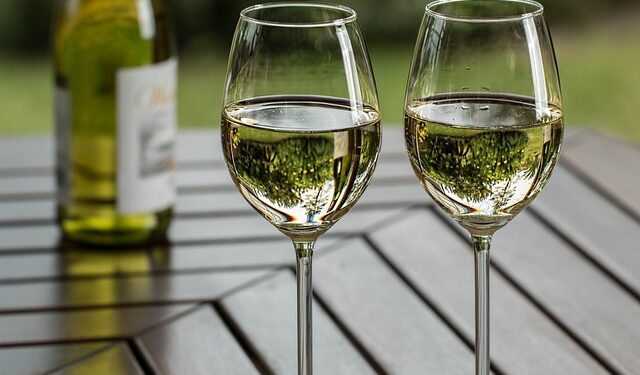What’s in Wine? A Clinician’s Perspective
Wine stands out as an exceptionally unique beverage due to its chemical makeup and psychosocial benefits, including those which promote well-being and longevity.
Research from blue zones suggests that moderate wine consumption may increase life expectancy and decrease rates of heart disease, possibly due to its phenolic components or ethanol content.
Shop from The Melb Wine Store
The Wine shop Melbourne is an online bottle shop that specializes in offering premium wines, spirits, beer, and ciders from around the world. Orders of six bottles or more qualify for free shipping with real-time tracking capabilities available through its mobile app; additionally the store carries Australian-produced varieties.
Customers can experience all that this shop has to offer by exploring its virtual tour, with customers being able to explore like they’re inside it all. Customers can customize their orders so that purchasing products of interest becomes simpler.
No matter the occasion – dinner with friends, a wedding reception or a gift for loved one – finding the ideal alcohol delivery service makes all the difference. No one likes having an event and running out of drinks halfway through; Melbourne offers many reliable companies that will get your beverages to you promptly. Just ensure they have an impeccable track record when it comes to reliability – the top ones have built their business around meeting that expectation and getting drinks directly to their target audiences quickly and reliably. Wine delivery Melbourne services enable customers to buy wines from their favorite local bottle shops and have them conveniently brought directly to their homes for free home delivery.
Benefits Of Wine
Antioxidants
Wine contains antioxidants which neutralize harmful free radicals found in our bodies that may damage cells and contribute to diseases such as certain cancers, heart disease, stroke, immune dysfunction and degenerative brain disorders like Alzheimer and dementia.
Resveratrol, an antioxidant found in grapes and other plants, is one of the mainstays in wine as an anti-oxidant. Resveratrol works to reduce cholesterol oxidation while protecting blood vessels against damage.
Other antioxidants found in wine include polyphenols and flavonoids. Polyphenols are plant chemicals that give wine its color and flavor; flavonoids help support healthy blood vessel formation while also reducing inflammation.
Wine contains many other chemical compounds such as esters, lactones, thiols and terpenes that contribute to its distinctive fruity, floral or herbaceous aromas; up to 9,000 volatile aroma molecules may exist within any bottle of wine!
Polyphenols
Wine contains many chemical compounds, such as aldehydes, esters, ketones, organic acids, phenolics, minerals and sugars; with particular attention being drawn to their anti-oxidant and health promoting benefits.
These molecules can be divided into two groups, flavonoids & non-flavonoids. Flavonoids contain molecules with a three-ring molecular backbone such as anthocyanins or flavan-3-ols found in white grape varieties like Chardonnay. Non-flavonoids lack this three-ring structure but include tannins & wine pigments among other smaller molecules.
As with ethanol production by yeast during fermentation, phenolic measurements provide valuable insights into wine quality and can be used to make informed decisions regarding winemaking. Tannins in particular contribute to drying sensations similar to black tea as well as texture and structure – the amount depends on grape variety, weather conditions during ripening/fermentation/aging as well as storage duration.
Resveratrol
Wine contains polyphenols – such as pyranoanthocyanins, flavonoids and the powerful antioxidant resveratrol – which act to combat oxidation by blocking free radicals in our bodies – these free radicals cause disease such as cancer, dementia, diabetes cardiovascular disease (heart attack and stroke), macular degeneration and arthritis among others.
Wine consists of mostly water and ethanol (around 85%). The remaining 3% is composed of organic acids, residual sugars, phenolics, glycerol, other alcohols, amino acids, minerals, aroma compounds and sulfites – these ingredients make up what’s known as its “body.”
The proportions of different components can differ widely from wine to wine due to both natural factors in the grapes used and human influence during cultivation, fermentation and winemaking processes. This variation gives each glass of wine its own distinct character and flavor profile.
Dopamine
Wine’s core process entails leaving grapes to ferment in a vat so that naturally occurring yeast can ferment the sugary juices into alcohol, giving the wine its unique aromas, body, and texture.
Alcohol by volume, commonly referred to as abv, is determined by how much sugar develops in grapes during cultivation, and which yeast was chosen during fermentation. Most wines range between 8%-15% abv; dessert or fortified wines may contain higher levels.
Ethanol creates a stimulating ‘buzz,’ but is also responsible for providing pleasure and sense of wellbeing associated with wine drinking. Researchers suspect this effect to be caused by dopamine’s release into our brains – this sensational high can only last so long and it’s important that it’s enjoyed with food in moderation to maximize this feeling-good effect. Dopamine helps the notch pathway stimulated in our brains that facilitates memory formation as well as feelings of reward.









